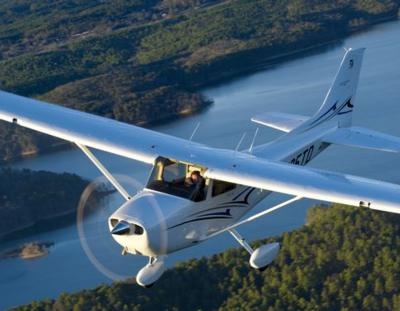Tue, May 08, 2018
Non-IFR Pilot Was Flying On A Moonless Night Over The Ocean
The NTSB has released a probable cause report from an accident which occurred on July 4, 2016, about 2300 Pacific daylight time. A Cessna 172F impacted the Pacific Ocean shortly after takeoff from Brookings Airport (BOK), Brookings, Oregon. The private pilot and two passengers were fatally injured, and the airplane was destroyed. The airplane was registered to Cessna 7870U, LLC, and was operated by the pilot as a personal flight. Night VFR conditions prevailed for the third leg of the cross-country flight, and no flight plan was filed. The destination was Grants Pass Airport, Grants Pass, Oregon.

According to the report, the non-instrument-rated pilot departed for the third leg of a cross-country flight in the airplane during dark (moonless) night conditions. The departure path was toward the ocean and over an area with few ground-based light sources to provide visual cues. A witness heard an airplane flying nearby and assumed that it was taking off from the airport. As the airplane continued, he heard a reduction in engine power, like a pilot throttling back while landing.
According to the witness, the engine did not sputter. Review of the recorded radar data showed that the airplane turned left shortly after takeoff and climbed to about 700 ft above ground level as it passed near the witness's location. The airplane did not arrive at its destination, and a search was initiated. The wreckage of the airplane was found in ocean waters about 2 miles west of the departure airport. Although visual meteorological conditions prevailed, no natural horizon and few external visual references were available during the departure. This required the pilot to monitor the flight instruments to maintain awareness of the airplane's attitude and altitude. Given the lack of external visual cues and the the pilot's lack of recent night flight experience and his lack of an instrument rating, it is likely that the pilot became spatially disorientated during the departing left turn.
The main wreckage was not recovered. Therefore, it could not be determined whether any preimpact mechanical malfunctions or anomalies were present.
The National Transportation Safety Board determines the probable cause(s) of this accident to be the pilot's spatial disorientation and loss of situational awareness during the departure turn in dark night conditions, which resulted in an in-flight collision with water.
(Source: NTSB news release. Image from file. Not accident airplane)
More News
From 2023 (YouTube Version): Legacy of a Titan Robert (Bob) Anderson Hoover was a fighter pilot, test pilot, flight instructor, and air show superstar. More so, Bob Hoover was an i>[...]
Get The Latest in Aviation News NOW on Instagram Are you on Instagram yet? It's been around for a few years, quietly picking up traction mostly thanks to everybody's new obsession >[...]
Aero Linx: B-52H Stratofortress The B-52H Stratofortress is a long-range, heavy bomber that can perform a variety of missions. The bomber is capable of flying at high subsonic spee>[...]
Altimeter Setting The barometric pressure reading used to adjust a pressure altimeter for variations in existing atmospheric pressure or to the standard altimeter setting (29.92).>[...]
"Knowing that we play an active part in bettering people's lives is extremely rewarding. My team and I are very thankful for the opportunity to be here and to help in any way we ca>[...]
 Classic Aero-TV: Remembering Bob Hoover
Classic Aero-TV: Remembering Bob Hoover ANN FAQ: Follow Us On Instagram!
ANN FAQ: Follow Us On Instagram! ANN's Daily Aero-Linx (05.15.24)
ANN's Daily Aero-Linx (05.15.24) ANN's Daily Aero-Term (05.15.24):Altimeter Setting
ANN's Daily Aero-Term (05.15.24):Altimeter Setting Aero-News: Quote of the Day (05.16.24)
Aero-News: Quote of the Day (05.16.24)



